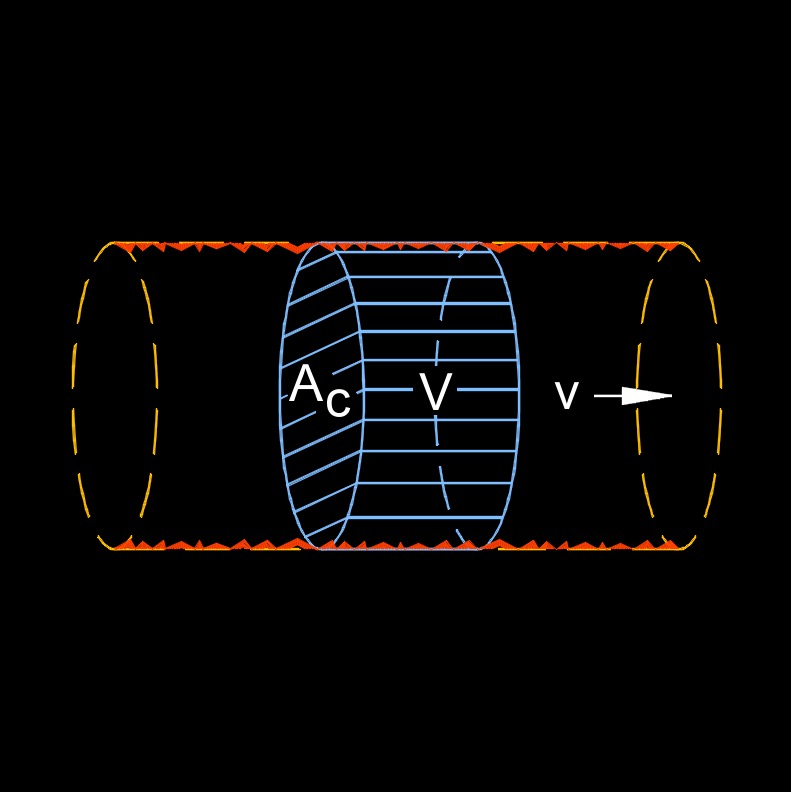Viscosity
Viscosity Formula |
||
|
\( \eta \;=\; \dfrac{ (g \cdot d^2) \cdot ( \rho_p - \rho_m ) }{ 18 \cdot v }\) (Viscosity) \( d \;=\; \sqrt{ \dfrac{ \eta \cdot 18 \cdot v }{ g \cdot ( \rho_p − \rho_m ) } } \) \( \rho_p \;=\; \dfrac{ \eta \cdot 18 \cdot v }{ g \cdot d^2 } + \rho_m \) \( \rho_m \;=\; \rho_p - \dfrac{ \eta \cdot 18 \cdot v }{ g \cdot d^2 } \) \( v \;=\; \dfrac{ g \cdot d^2 }{ 18 \cdot \eta } \cdot ( \rho_p - \rho_m ) \) |
||
| Symbol | English | Metric |
| \( \eta \) (Greek symbol eta) = medium Viscosity | \(lbf - sec \;/\; ft^2\) | \( Pa - s \) |
| \( g \) = Gravitational Acceleration | \(ft \;/\; sec^2\) | \(m \;/\; s^2\) |
| \( d \) = Pipe Inside Diameter | \( in \) | \( mm \) |
| \( \rho_p \) (Greek symbol rho) = Particle Density | \(lbm \;/\; ft^3\) | \(kg \;/\; m^3\) |
| \( \rho_m \) (Greek symbol rho) = Medium Density | \(lbm \;/\; ft^3\) | \(kg \;/\; m^3\) |
| \( v \) = Medium Velocity | \(ft \;/\; sec\) | \(m \;/\; s\) |

Viscosity, abbreviated as \(\eta\) (Greek symbol eta), is the measure of the internal friction/resistance to the flow of a liquid. Lower viscosity fluids flow easily in pipes where high viscosity fluids have a higher pressure drop. Viscosity of fluids is typically temperature dependent and is not affected as dramatically by pressure as gas viscosity. In fact, typically as a liquid temperature increases, the velocity decreases. When a gas temperature increases, the viscosity increases!
There are two different types of viscosity, dynamic viscosity and kinematic viscosity. Higher the viscosity the more resistance to flow. Lower the viscosity the less resistance to flow. Temperature also plays a part, lower the temperature, higher the resistance. Higher the temperature, lower the resistance. A Viscometer meter can be used to measure viscosity.
Viscosity is normally determined by measuring the time required for a fixed volume of a fluid (at a given temperature) to flow through a calibrated orifice or capillary tube. The instruments used to measure the viscosity of a liquid are known as viscometers or viscometers. Lower viscosity fluids will flow more easily and faster, while high viscosity fluids will flow more slowly. A high viscosity fluid has more resistance to flow than a low viscosity one.

